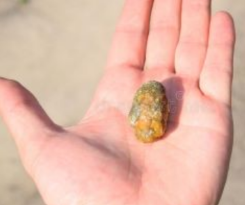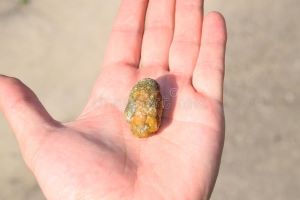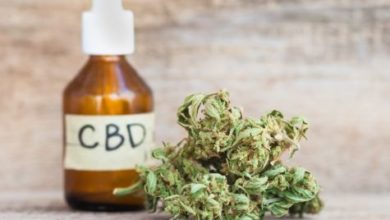3 Ways to Check if You Have Gallstones

Eating healthy can seem like a gigantic task for many who have been used to consuming junk food since childhood.
They’ve seen their parents chug on a cola or eat deep-fried potatoes. Assuming there’s nothing wrong with those eating patterns, they continued these habits into adulthood.
Only when problems start appearing do they seek medical attention. And health conditions like gallstone development can occur so suddenly that you wouldn’t get the chance to visit a doctor.
In a heartbeat, you would end up in a hospital, begging for the pain to stop.
What are Gallstones
So what can you do to prevent gallstones? Well, first, you need to understand what gallstones are.
Gallstones are solid pieces that form in your gallbladder, a small organ under your liver. 80% are formed from cholesterol, while the rest are from bilirubin (waste material breaking down red blood cells). Gallstone sizes can range from the size of a grain of sand or a chickpea to that of a golf ball.
The unfortunate thing about gallstones is that you won’t know you have them. Until one blocks a duct or passage leading to your small intestine or a duct coming from your liver.
But there are alternative ways to check for gallstones.
1. See What You’re Eating
If your diet consists mainly of fatty and sugary foods, be aware, for you might soon be at risk of developing gallstones.
Too much fat, especially from animal sources and baked goods (cookies, biscuits), can cause cholesterol build-up in your body. Eventually, the cholesterol level will be too high for your body to handle, and it will get stored in your gallbladder.
Remember that sugar can also get converted into fat if its levels reach high enough. So the best thing you can do is manage your eating habits and choose less fatty and less sugary foods.
Also, include more fiber in your diet through eating fruits, vegetables, peas, lentils, and whole-grain bread.
-
Look into Your Family History
They say the apple doesn’t fall far from the tree. Well, maybe either one of your parents had their gallstone removed when they were younger, and you have no idea.
So ask your parents and direct relatives about health issues. It can help you uncover any hidden health problem in your body that could otherwise go unnoticed.
Your race can also play a role. For example, if you’re Native American or Mexican, you have a high possibility of developing gallstones.
-
Get a Blood Test
It might seem like an unneeded hassle to drag yourself to the clinic. Still, that one blood test can provide very crucial information.
Blood glucose, triglyceride, cholesterol, and bilirubin can tell you about the state of your gallbladder.
- Normal blood glucose should be less than 140 mg/dL (7.8 mmol/L)
- Normal triglyceride levels should be less than 150 milligrams per deciliter (mg/dL)
- Normal cholesterol levels should be less than 200 milligrams per deciliter (mg/dL)
- Normal bilirubin levels should be less than 1.3 milligrams per deciliter (mg/dL)
Luckily there are blood draw at home services you can contact to have your blood checked out. Don’t wait till you feel pain on your left side, so schedule a blood test soon!





